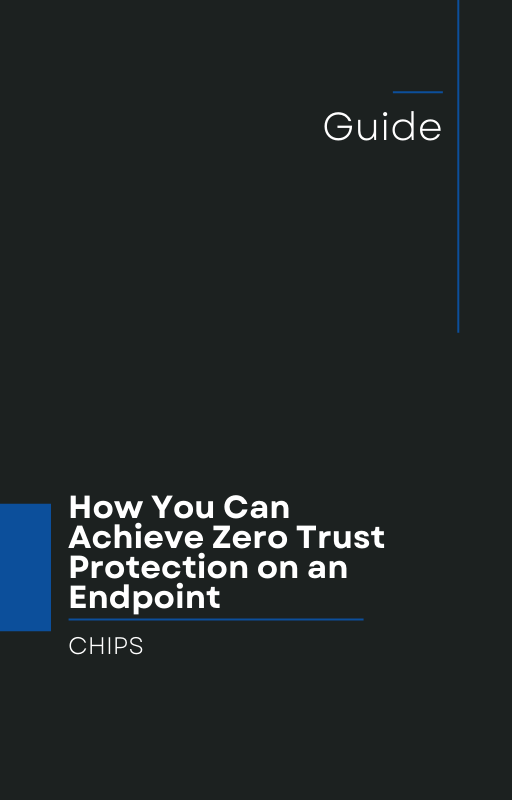On April Patch Tuesday, Microsoft disclosed a critical zero-day vulnerability—CVE-2024-26234—actively exploited in the wild. This high-severity flaw allowed attackers to bypass Windows Defender SmartScreen protections, enabling malicious files to execute with minimal user resistance. Alongside it came troubling news from SAP: two major vulnerabilities in SAP NetWeaver Application Server and SAP Business Client, potentially exposing enterprise systems to serious compromise.
These events underscore a chilling reality: the traditional “Detect and Respond” model is failing. Businesses are too often reacting after the breach has occurred. It's time to change the game—and AppGuard is leading that charge through proven Isolation and Containment.
Zero-Day in the Wild: Why Detection Fails
Let’s look at the Microsoft zero-day. According to CSO Online’s report, the CVE-2024-26234 vulnerability enables attackers to slip past Microsoft Defender SmartScreen—a core part of the operating system’s defenses.
The issue? This threat was already being exploited before it was patched. And that’s not unusual. The window between discovery and patch deployment is prime hunting ground for attackers. Businesses relying solely on detection tools—antivirus, EDR, or threat intelligence—remain vulnerable until a patch is developed, distributed, and applied.
Detection-based tools inherently operate after an attack has begun. They analyze behavior, match known signatures, or flag anomalies. But when the threat is new—or actively avoiding detection as this zero-day did—the delay can be costly.
SAP Vulnerabilities Show Risks Extend Beyond Microsoft
It’s not just Microsoft in the spotlight. SAP’s April patches addressed two severe vulnerabilities:
-
SAP NetWeaver Application Server ABAP (CVSS score: 9.1)
-
SAP Business Client (CVSS score: 8.8)
Both offer attackers opportunities to manipulate critical enterprise applications. In high-value environments, such as finance, manufacturing, or healthcare, SAP systems run the backbone of operations. Exploits here can result in data theft, operational disruption, and severe financial loss.
These SAP flaws are a reminder that modern business environments are complex, hybrid systems. Defending them with a patch-and-detect mindset creates too many blind spots—especially for zero-day or custom-built attacks.
Isolation and Containment: Why AppGuard Is Different
AppGuard takes a radically different approach. Instead of trying to detect and react, it prevents malicious actions from executing in the first place—even if they come from trusted applications or zero-day vulnerabilities.
Here’s how AppGuard works:
-
Isolation: AppGuard enforces containment at the process level, keeping applications from performing actions they shouldn’t—even if they’ve been compromised.
-
No Signature Dependency: It doesn’t rely on known threat signatures or behavior analytics. It assumes nothing and blocks the unknown.
-
Continuous Protection: Even if a user clicks a malicious link or downloads a trojan-laced file, AppGuard prevents the malware from launching, spreading, or harming the system.
This strategy isn’t hypothetical. AppGuard has a 10-year track record of zero breaches in operational environments—including some of the most targeted government and commercial systems. It’s now available for widespread commercial adoption, offering SMBs and enterprises the same military-grade protection.
A New Standard for Cyber Defense
The zero-day vulnerabilities highlighted in Microsoft and SAP systems aren’t isolated incidents—they’re part of a rising tide. Attackers are innovating faster than defenders can patch or detect.
To keep up, businesses need to evolve from passive detection to active prevention.
AppGuard’s Isolation and Containment model isn’t just a better defense—it’s the future of cybersecurity. It stops ransomware, fileless attacks, and zero-days at the execution level, without depending on updates or threat intel.
Talk to CHIPS: Let’s Prevent the Next Incident
If your business is relying on detection-based tools alone, you’re betting against time—and today’s zero-day threats don’t give you much of it.
Talk to us at CHIPS about how AppGuard can prevent the kinds of incidents described in CSO Online’s Patch Tuesday update. Let’s discuss how Isolation and Containment can safeguard your endpoints, your data, and your operations.
It’s time to stop reacting to cyberattacks—and start preventing them.
Contact CHIPS today to learn how AppGuard can protect your business.
Like this article? Please share it with others!

April 16, 2025

Comments